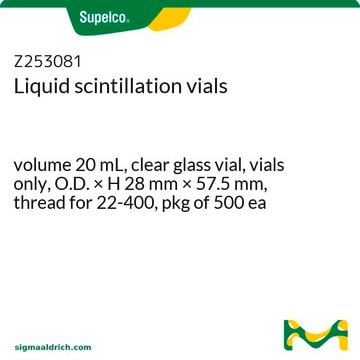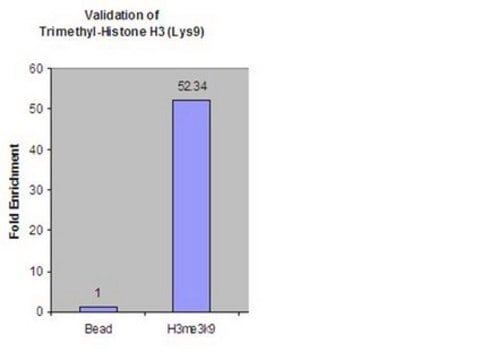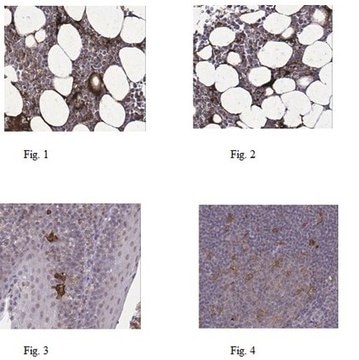詳細
We are committed to bringing you greener alternative products, which adhere to one or more of The 12 Principles of Green Chemistry.This antibody is Preservative-free, produced without the harm or sacrifice of animals and exceptionally stable to allow for ambient shipping and storage if needed and thus aligns with "Waste Prevention", "Designing Safer Chemicals" and "Design for Energy Efficiency".
Click here for more information.
ZooMAb® antibodies represent an entirely new generation of recombinant monoclonal antibodies.Each ZooMAb® antibody is manufactured using our proprietary recombinant expression system, purified to homogeneity, and precisely dispensed to produce robust and highly reproducible lot-to-lot consistency. Only top-performing clones are released for use by researchers. Each antibody is validated for high specificity and affinity across multiple applications, including its most commonly used application. ZooMAb® antibodies are reliably available and ready to ship when you need them.
特異性
Clone 4J8 is a ZooMAb® Rabbit recombinant monoclonal antibody that specifically detects Histone H3 trimethylated on lysine 9.
免疫原
KLH-conjugated linear peptide corresponding to 11 amino acids from the N-terminal region of human Tri-Methyl-Histone H3-Lys9 (Histone H3-Ly9 3me).
アプリケーション
Quality Control Testing
Evaluated by Western Blotting in HeLa cell acid extract.
Western Blotting Analysis: A 1:1,000 dilution of this antibody detected Histone H3-Lys9me3 in HeLa cell acid extract.
Tested Applications
Western Blotting Analysis: A 1:1,000 dilution from a representative lot detected Histone H3-Lys9me3 in Balb3T3/A31 and RAT2 cell lysates.
Affinity Binding Assay: A representative lot of this antibody bound Tri-Methyl-Histone H3-Lys9 peptide with a KD of 1.9 x 10-6 in an affinity binding assay.
Peptide Inhibition Assay: Target band detection in HeLa cell acid extract was prevented by pre-blocking of a representative lot with Histone H3-Lys9me3 peptide, but not with non-methylated Histone H3-Lys9
Immunohistochemistry (Paraffin) Analysis: A 1:100 dilution from a representative lot detected Histone H3-Lys9me3 in human colon tissue sections.
Note: Actual optimal working dilutions must be determined by end user as specimens, and experimental conditions may vary with the end user
ターゲットの説明
Histone H3.1t (UniProt: Q16695; also known as H3/t, H3t, H3/g) is encoded by the HIST3H3 (also known as H3FT) gene (Gene ID: 8290) in human. Histones are highly conserved basic nuclear proteins that are responsible for the nucleosome structure of chromatin in eukaryotes. They play a central role in transcription regulation, DNA repair, DNA replication and chromosomal stability. DNA accessibility is regulated via a complex set of post-translational modifications of histones, also called histone code, and nucleosome remodeling. Two molecules of each of the four core histones (H2A, H2B, H3, and H4) form an octamer, around which DNA is wrapped in repeating units, called nucleosomes, which limits DNA accessibility to the cellular machineries that require DNA as a template. Histone H3 features a main globular domain and a long N-terminal tail, which protrudes from the globular nucleosome core and can undergo several different types of epigenetic modifications that influence cellular processes. The amino-terminal tails of histone proteins are subject to posttranslational modifications, including acetylation and methylation, which recruit downstream regulatory factors, influence chromatin structure, and are critical determinants of transcription. Histone H3 can undergo acetylation on several lysine residues in the histone tail by histone acetyltransferases. Acetylation is generally associated with transcriptional activity and methylation of lysine and arginine residues can either activate or repress depending on the residue modified. Trimethylation of histone H3 on Lys9 (H3K9me3) is one of the most studied epigenetic marks. H3K9me3 functions in the repression of euchromatic genes, and in epigenetic control of heterochromatin assembly, most likely by acting as a recognition motif for the binding of chromatin-associated proteins, such as Swi6 or HP1 . Although H3K9Me3 has been associated with transcriptional repression, some studies implicate it in transcriptional activation and mRNA elongation by RNA polymerase II. This ZooMAb® recombinant monoclonal antibody, generated by our propriety technology, offers significantly enhanced specificity, affinity, reproducibility, and stability over conventional monoclonals. (Ref.: Wiencke, JK., et al. (2008). Oncogene. 27(17); 2412-2421; Tamaru, H., et al. (2003). Nat. Genet. 34(1); 75-79).
物理的形状
Purified recombinant rabbit monoclonal antibody IgG, lyophilized in PBS with 5% Trehalose, normal appearance a coarse or translucent resin. The PBS/trehalose components in the ZooMAb formulation can have the appearance of a semi-solid (bead like gel) after lyophilization. This is a normal phenomenon. Please follow the recommended reconstitution procedure in the data sheet to dissolve the semi-solid, bead-like, gel-appearing material. The resulting antibody solution is completely stable and functional as proven by full functional testing. Contains no biocide or preservatives, such as azide, or any animal by-products. Larger pack sizes provided as multiples of 25 μL.
再構成
300 μg/mL after reconstitution at 25 μL per vial. Please refer to guidance on suggested starting dilutions and/or titers per application and sample type.
保管および安定性
Recommend storage of lyophilized product at 2-8°C; Before reconstitution, micro-centrifuge vials briefly to spin down material to bottom of the vial; Reconstitute each vial by adding 25 μL of filtered lab grade water or PBS; Reconstituted antibodies can be stored at 2-8°C, or -20°C for long term storage. Avoid repeated freeze-thaws.
法的情報
ZooMAb is a registered trademark of Merck KGaA, Darmstadt, Germany
免責事項
Unless otherwise stated in our catalog or other company documentation accompanying the product(s), our products are intended for research use only and are not to be used for any other purpose, which includes but is not limited to, unauthorized commercial uses, in vitro diagnostic uses, ex vivo or in vivo therapeutic uses or any type of consumption or application to humans or animals.










